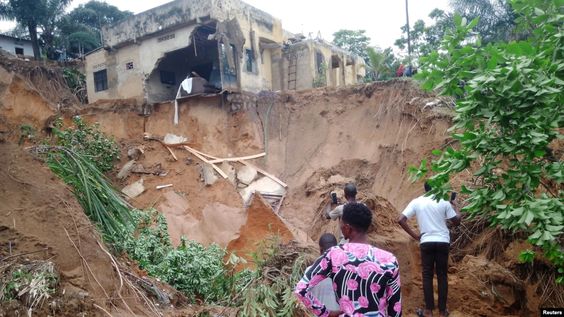Africa
Floods have killed at least 50 people in the Congolese capital

According to the city’s police commissioner, Sylvano Kasongo, at least 50 people have died in the capital city of Kinshasa in the Democratic Republic of the Congo as a result of landslides and floods brought on by torrential rains.
Sinkholes tore apart homes and roads, especially the N1 highway that connects Kinshasa to the main seaport of Matadi, and muddy water flooded whole neighborhoods.
Kasongo stated, “We are already at about 50 deaths, and that is not yet definitive.”
Images sent on Twitter by Patrick Muyaya, the government spokesman for Congo, showed crowds gathered around a main road that appeared to have collapsed into a large gap.
“Several dozen countrymen” had died, according to Muyaya. He said the governor, prime minister, and other officials were on the scene conducting evaluations and would announce a final toll later.
The N1 motorway, which connects Kinshasa to neighboring cities, was split in half in the Mont-Ngafula region, according to a statement from the prime minister’s office.
It stated that the route should be reopened in 3 to 4 days.
“There is a sizable hole on National Road 1. Only foot traffic is permitted. “We are baffled by how the water severed the road,” “said Gabriel Mbikolo, a local.
Kinshasa used to be a fishing village on the banks of the Congo River, but now it is one of Africa’s biggest megacities with a population of almost 15 million people.
As a result of poorly controlled, fast urbanization, the city has become more susceptible to flash floods during heavy rains, which have become more common due to climate change.
When it rained too much in 2019 and flooded low-lying areas of Kinshasa, many buildings and roads collapsed, killing at least 39 people.
According to a 2020 World Bank document, each day of flooding costs households $1.2 million in total due to the extensive transportation interruption. This is in addition to the cost of destroying infrastructure.
